Last Updated on: February 5, 2025
How do you decide the bird species you want to see?
Do you start with regular birds and then look for migratory or winter birds?
Whichever birding style you use, there’s plenty to discover in this state because Louisiana has almost 400 species.
In this article, we’ll look at some of the most common birds of Louisiana so that as you decide where you want to start, you can know the ones that are likely to visit your backyard, local park, or forest throughout the year. Get all of these facts below.
20 Common Birds In Louisiana
Louisiana is next to birding destinations like Texas, Oklahoma, and Mississippi. Therefore, it yields nothing short of an adventure. Here’s what to expect:
1. Tufted Titmouse
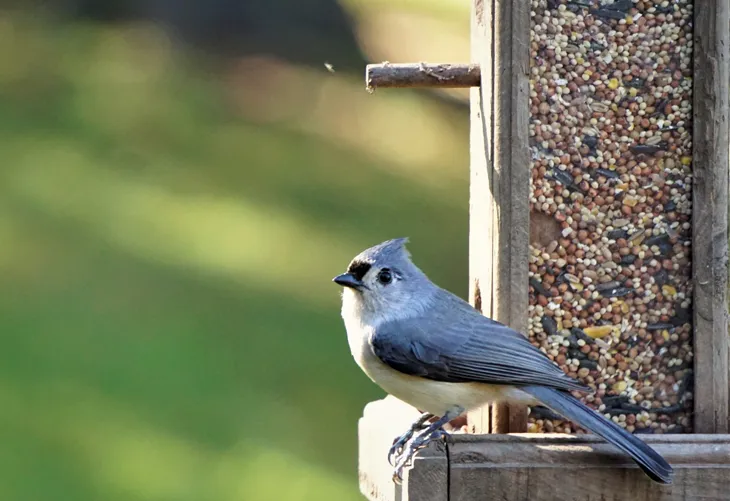
This small, shy species likes gathering its seeds privately, so when it comes to your bird feeders, you’ll see it fly from the nearby bush to grab a few seeds and dart back to its hideout.
It’ll grant you a few seconds to marvel at its beautiful plumage consisting of a gray body, a white underbelly, and an elaborate crest.
Both males and females have the same color pattern, so it might take longer to differentiate them amidst all their activity as they dash to and from their hideouts.
If you’re not watching birds in your backyard, look for tufted titmice in deciduous forests or local parks, as those are the other two habitats they frequent. They’re tiny, averaging 5.5 to 6.3 inches long, about half the size of American robins.
2. White-breasted Nuthatch
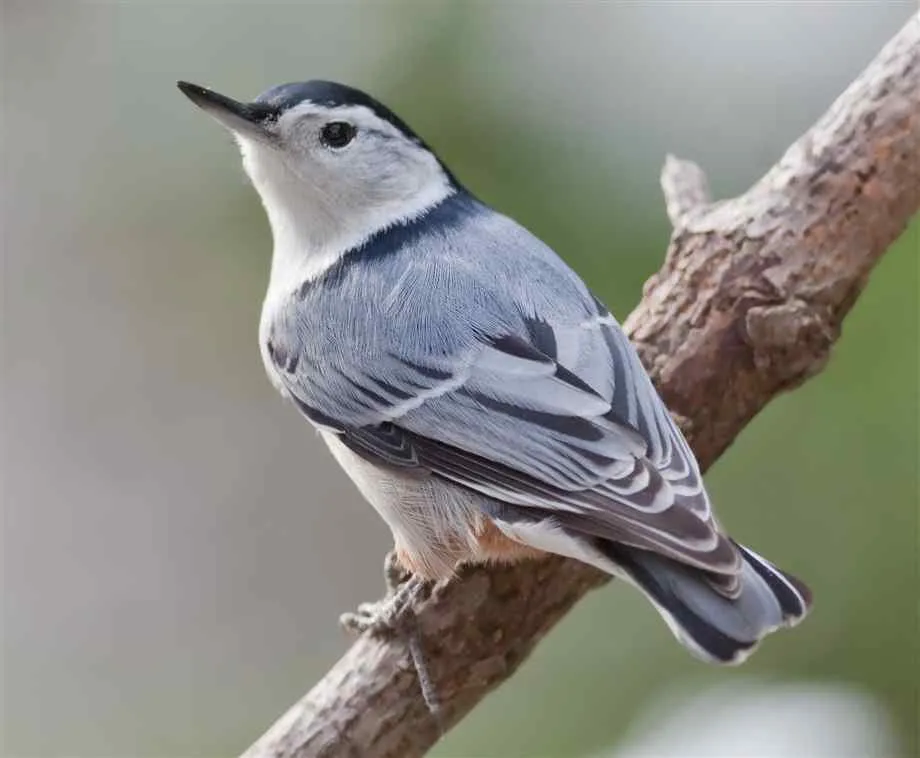
Unlike the species above, you can differentiate a male from a female white-breasted nuthatch by looking at the crown because a male bird has a black one while that of a female is bluish-gray.
If the two birds aren’t perched on the same spot for you to see their crowns, then you might not differentiate them because they both have white underbellies and gray-black upper parts.
White-breasted nuthatches are common backyard birds that love many foods, from suet to mealworms and black oil sunflower seeds. If none visit your bird feeders despite the bird food you offer, you might see them in nearby deciduous forests or cemeteries.
3. American Goldfinch

American goldfinches are in northern Louisiana throughout the year, but the southern area falls in the wintering range that extends from California to Florida.
This species doesn’t eat insects, so it survives on grass, weed seeds, and black oil sunflower seeds. This diet is one of the reasons goldfinches breed in June, after most of the other birds, because that’s when there are more seeds. Now you know the bird food you should offer such common backyard birds in Louisiana.
You know there’s an American goldfinch in your backyard when you see a small bird between 4.3 and 5.1 inches with a yellow body, black wings, and a black cap. A female bird is slightly duller, and its head lacks a distinguishing cap.
Since part of this state is in the wintering range, the American goldfinches you’ll see might have already molted into a duller brown-olive color.
4. American Crow
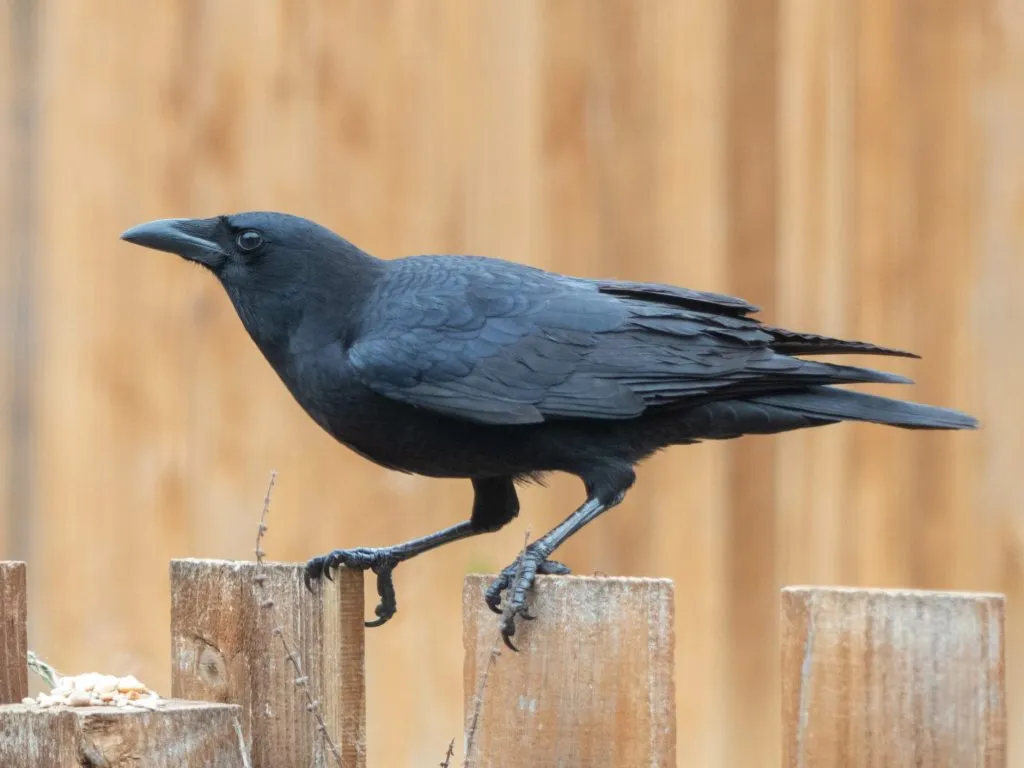
The American crow loves a variety of habitats like woodlands, cemeteries, and landfills. Its diverse diet lets it survive anywhere. Since Louisiana is in the resident range of the American crow, you’ll come across so many crows whenever you visit those habitats we’ve mentioned.
Lookout for a large bird of between 15.8 and 20.9 inches. That’s about two times the size of a blue jay.
American crows are easy to identify because they only have one plumage color. Consequently, whenever you see a large black bird with black legs and a black bill, it’s most likely a crow.
5. Red-winged Blackbird

The species above is the only one you can confuse with a red-winged blackbird. But once you see the orange patch on a black male bird, you know it’s not a crow. On the other hand, female blackbirds will have you wondering whether they are large sparrows because of the streaks on their brown bodies.
The first place you should look for these blackbirds is marshes and rice paddies, as they love wet habitats. During the breeding season, they move to dry places like meadows.
Louisiana has resident birds like most of the United States, whereas the short-distance migrants in the north migrate to parts of California in winter, about 800 miles away.
6. Red-bellied Woodpecker
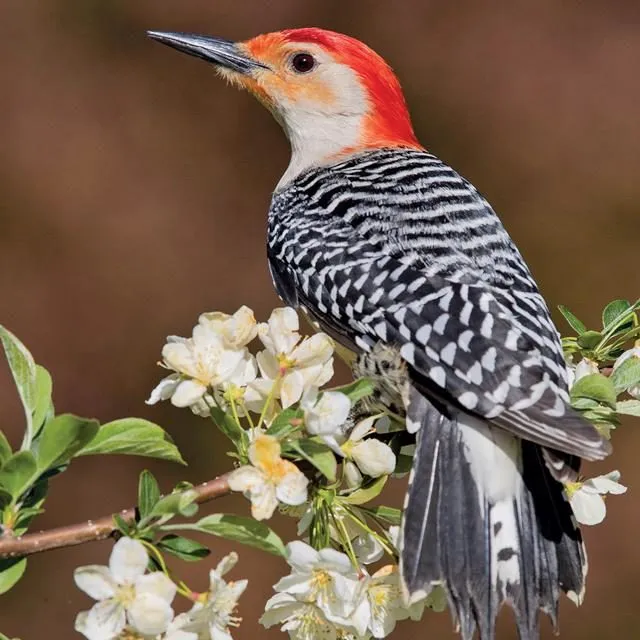
Red-bellied woodpeckers are medium-sized birds of about 9.4 inches. Their favorite habitats are woodlands with hickory or oak trees, although you may also see them in your backyard if you live near a woodland forest.
This woodpecker species pops in for some suet or a generous portion of fruit slices in your bird feeders. You know you’re feeding a red-bellied woodpecker when you see a bird with a red crown, a white belly, and black and white stripes on its back. The female bird has the same plumage, although the red feathers on its head start from the nape, not the crown.
This bird’s name is very misleading; you might be looking for a bird with a red belly only to see one with a whitish one.
Lastly, the red-bellied species is one of the reasons you can’t skip a bird-watching tour in Louisiana because it’s only in the eastern states and nowhere else in all of North America.
7. Pileated Woodpecker

The pileated woodpecker is the largest of the woodpeckers you’ll see in Louisiana, and it has the same black, white and red plumage as most woodpeckers. It also has a large, thick bill that makes its drumming easier. Just prepare for sleepless nights with endless drumming noise.
But, since pileated woodpeckers prefer rotting wood to dig out termites, wood-boring beetles, and carpenter ants, you’ll only see them in your backyard if you have such dead or falling trees.
You can easily differentiate a male from a female pileated woodpecker by the red feathers on their face because a male has a red stripe on the cheek, but a female bird has a black one. These woodpeckers can grow as long as 19 inches, so they’re about the size of American crows.
Louisiana and other eastern states host pileated woodpeckers throughout the year, as do most northwestern states. The only places you’ll not find these birds are the middle and western states, from Kansas westward.
8. American Robin
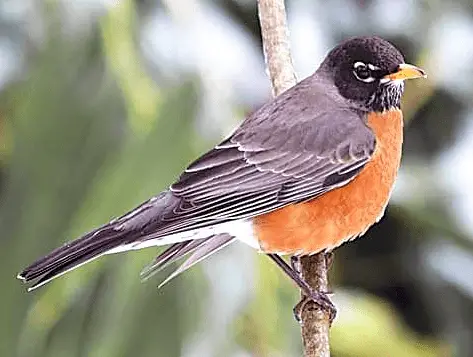
The American robin is one species you’ll see every time you go birding in North America unless you’re exploring Canada and other northern areas.
This rusty red bird with a dark back is one of the few species that visits a bird feeder without expecting seeds.
Instead, this migratory bird loves fruits, insects, and insect larvae. A robin is of medium size, not as small as a downy woodpecker or as large as a crow, with a body length between 7.9 and 11 inches.
9. Downy Woodpecker

The first thing you notice when you see a male downy woodpecker is a red patch on the head, between black and white stripes. If there’s a female bird nearby, you quickly differentiate the two because a female only has black and white stripes.
Downy woodpeckers are everywhere in the United States except on the southern side of Arizona, Mexico, and Texas. Therefore, in Louisiana, expect to see this bird anywhere, from backyards with bird feeders to parks.
10. Hairy Woodpecker

A hairy woodpecker isn’t different from a downy, but it has a longer body, and its bill is also longer. Hairy woodpeckers are backyard birds in Louisiana that also inhabit parks, orchards, and mature woodlands.
They also love burned forests and woodlots. During the breeding season, they excavate dead trees or branches on a living tree.
11. Eastern Bluebird

An Eastern Bluebird is a medium-sized bird that grows between 6.3 and 8.3 and has a beautiful combination of deep blue and rusty plumage. Its breeding, resident, and wintering ranges are all in North America, with Louisiana hosting resident birds.
These backyard birds find refuge in many places, from meadows to golf courses, and utilize nest boxes during the nesting period. When a male eastern bluebird is looking for a mate, it gathers nest material near the cavity and flutters its wings while flying above the entrance.
12. House Sparrow
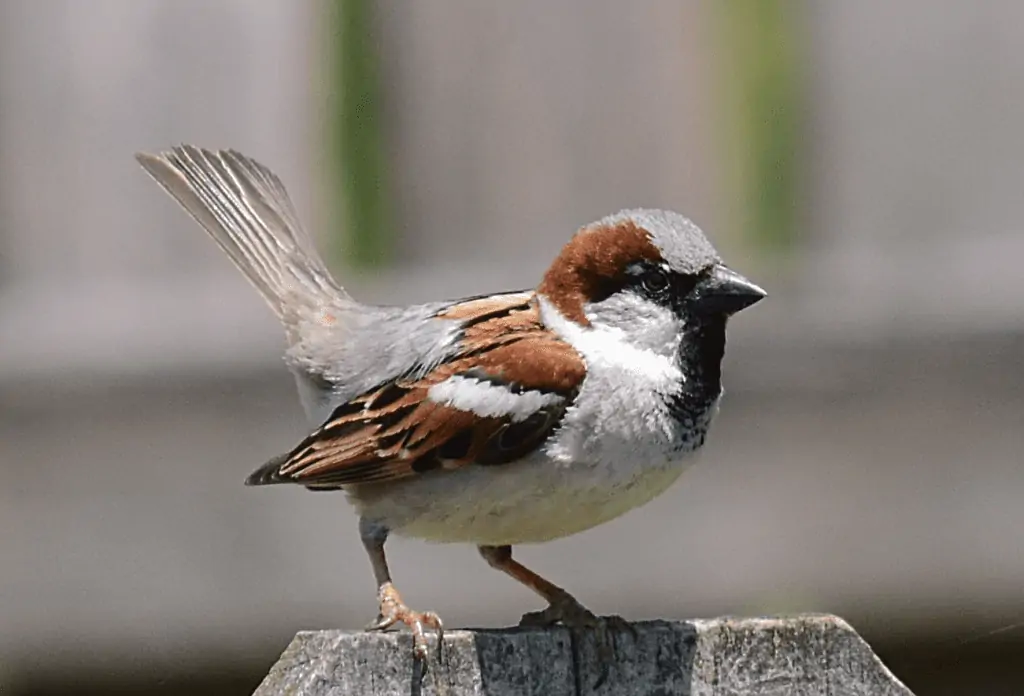
The house sparrow has the usual dark brown, streaked plumage we expect from sparrows. However, you’ll notice that a male has a dark gray crown, white cheeks, and a black bib.
It’s one of the most common birds in North America, one that is very invasive to the point of overwhelming a backyard when it arrives in flocks.
A house sparrow even takes over structures and builds nests wherever it pleases. If you don’t mind entertaining house sparrows in your backyard, you can offer them generous portions of millet and cracked corn.
13. European Starling
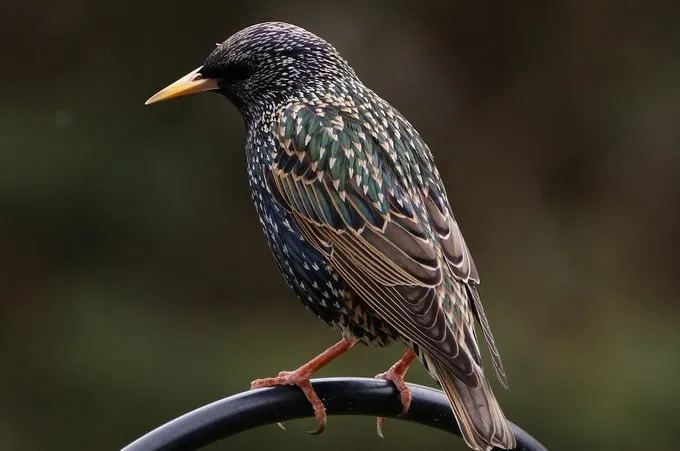
The European starling is another invasive species in Louisiana. If you want to know what it looks like to discourage it from your lawn, look for a bird of average body length with black plumage and a shiny green-purple sheen.
This species wasn’t always in North America because its first habitat was in New York in 1890. But, the ones who brought it from Europe underestimated its ability to adapt to different habitats and eat anything.
Thus, years later, it’s a nuisance to homeowners who don’t like how flocks of European starlings invade a backyard, eat everything, and chase away small birds.
That’s why you’ll come across so many articles of homeowners looking for ways to prevent starlings from inhabiting their backyards. Fortunately for such homeowners, the migratory bird act doesn’t protect non-native species like the starling.
14. Brown-headed Cowbird
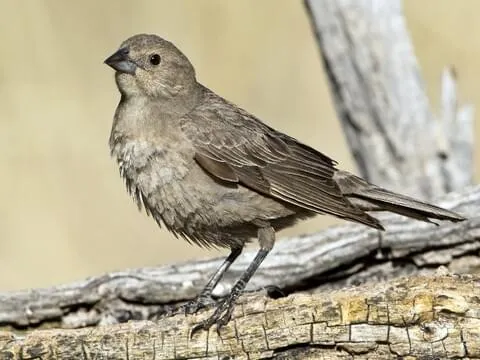
There are many brown-headed cowbirds in this state throughout the year, and you can see them in grasslands or woodland edges. When visiting such habitats or cemeteries, look for a bird with a brown head and a black body.
It’s a chunky blackbird with a thick but short bill. The female cowbird doesn’t have such a color pattern as it has a brown body with slight streaks on its belly.
When a female blackbird is nesting, it goes looking for a nest it can dump eggs, whether it’s the nest of a red-winged blackbird, a yellow warbler, or a sparrow, and have the host incubate them.
15. Blue Jay
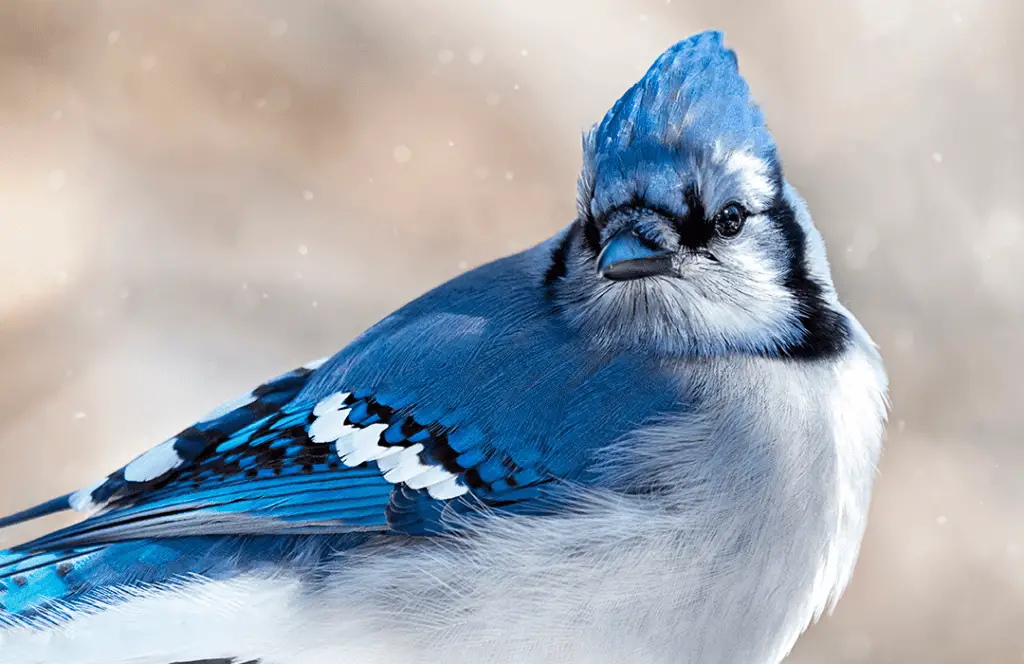
The bluish birds you might have seen in other states are also in Louisiana’s oak forests and backyards. These two habitats supply the nuts, seeds, and insects they need. Blue jays are so good at selecting and storing undamaged acorns that they can help spread an oak forest.
When nesting, a blue jay will look for a deciduous or coniferous tree and build a nest on an outer branch.
This bird’s crest is one of its communication features. When it’s low on the head, the bird is less aggressive. That happens when a blue jay is in the mating season, in a flock, or with its nestlings.
16. Northern Cardinal

You’ll only see this bird in the eastern and southwestern states in all of North America. What’s not to love about a northern cardinal? It has a vibrant, warm color pattern that doesn’t molt like an American goldfinch, and its morning calls are refreshing whistles.
Even when cardinals come to your bird feeder, they’re manageable because, unlike other birds, they’re ground feeders.
A strange habit during the breeding season is both sexes poking their reflections whenever they’re in front of a shiny surface like a car mirror. One of the reasons for this habit is their instinctive readiness to defend nests from intruders.
17. Northern Mockingbird

This species lives everywhere in the United States, so you’ll see many of them whenever you tour shrubby areas or cultivated land.
Northern mockingbirds eat insects in summer and a wide range of fruits in winter. One of the ways to attract them to your backyard is by leaving an open lawn with fruits and bushes like blackberry brambles.
When you do that, prepare for several rounds of songs daily, about 200 different tunes from the male bird. That’s one of the reasons the northern mockingbird is a common caged bird.
You might mistake it for a white-breasted nuthatch or a black-capped chickadee if you don’t pay close attention to its color pattern because these three species have white, gray, and black plumage.
A northern mockingbird has a gray back with two white wing bars and a whitish underbelly. It’s about twice the size of a nuthatch or a black-capped chickadee, as its length is between 8.3 and 10.2 inches long.
18. Carolina Chickadee
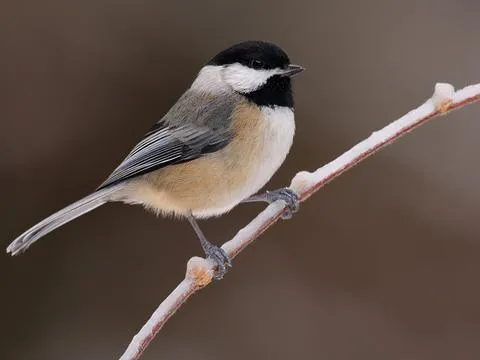
You might not differentiate a black-capped chickadee from a Carolina chickadee until you compare their color patterns and note that Carolina chickadees have plain gray wings without defined white edges like black-capped chickadees. Their songs are also different.
Thirdly, the black-capped has a northern range, so it’s rare or never seen in southern states like Louisiana and Texas. Since the two ranges never overlap, you’ll probably never have to differentiate them side to side.
Habitats this species loves include coniferous woodlands, open woods, and riparian land. Its diet comprises plants and insects, so chickadees often come to bird feeders for bird seeds.
19. Mourning Dove
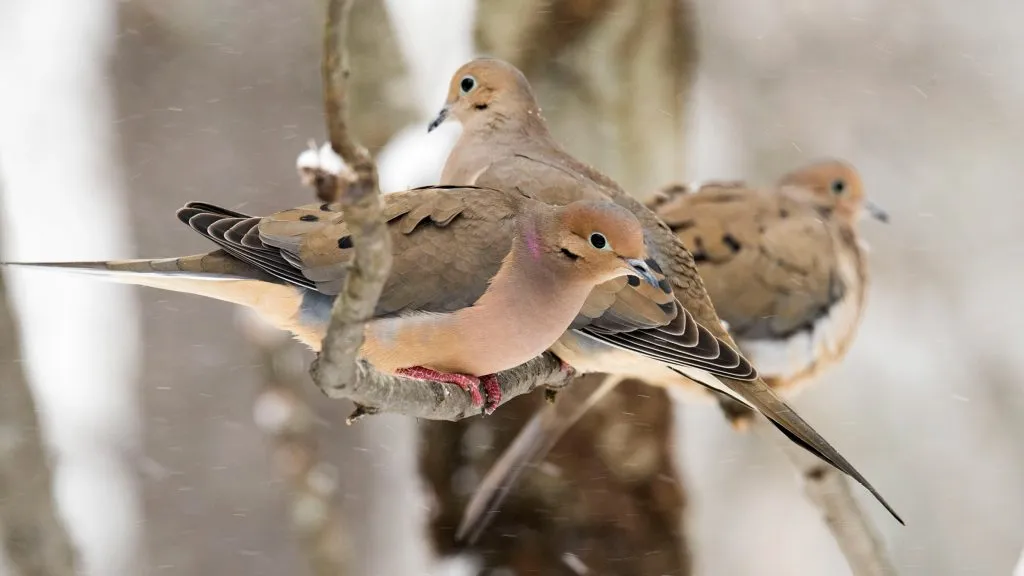
If there’s an avian that loves telephone wires, it’s a mourning dove. It perches there gracefully, its pinkish legs under a plump gray body with black spots on the wings.
When it’s time to gather seeds, mourning doves fly to the nearest bird feeders and stock up on fallen seeds to digest later.
Mourning doves are game birds, and despite the millions hunted annually, millions more inhabit all of the United States.
They love open areas with scattered trees and edges of mature woodlands. During the winter months, they roost in flocks in woodlots.
20. Common Grackle

The eastern states serve as the breeding and resident ranges of common grackles.
If you haven’t seen these omnivores, they’re large birds averaging 11 to 13 inches long. Male grackles have bronze bodies and iridescent bluish heads, while females have less shiny bodies.
Instead of pecking the ground when they flock on lawns and farm fields, they scratch it looking for grains and insects.
Another distinguishing habit is the undecided nature of female grackles building nests. They can start the work, and halfway, they abandon the site and look for a new location. Often, their nests are near water.
Watch This!
Frequently Asked Questions
What is the rarest bird in Louisiana?
One of the rare sightings in the last decade is pyrrhuloxia, a close cousin of the northern cardinal. It inhabits southwestern states and Mexico, and its sighting in Louisiana surprised and excited many birders.
Other birds listed as rare sightings include the limpkin, willet, American white pelican, and reddish egret.
How many species of birds are there in Louisiana?
There are 470 species ranging from owls to hawks, wrens, and sparrows. That’s why this state is a priority for anyone hoping to see as many North American birds as possible.
Its location in the middle states and southern side of the continent gives it a vantage point as a habitat for resident eastern birds and wintering species.
Are cardinals in Louisiana?
Yes, northern cardinals are resident species in this state. They’re common in backyard feeders.
Are there house finches in Louisiana?
Yes, Louisiana is in the resident range of the purple finch, pine siskin, and house finch.
How do I identify a bird?
When you spot a bird, look for features like the color pattern, body size, shape, and leg size. See whether it has the same colors on its back, underside, head, and legs. There might also be stripes and spots on some body parts.
In addition to these identification features, also watch how a bird behaves when it comes to your backyard. Some, like northern cardinals, prefer collecting seeds on the ground.
You’ll also note how they fly and the size and color of their flight wings. For example, a red-tailed hawk has brown feathers when perched on a tree, but these feathers are pale and banded when you see this bird soaring in the sky.
Conclusion
Louisiana’s diverse birdlife proves you should explore all of it, from northern locations like Rock Island Greenway to southern attractions like Lake Martin Levee Trail. You’ll spot common backyard birds in Louisiana, migratory and breeding species.
Remember the identification features we’ve explained above, and if you get confused, reach out to this article and check bird pictures to be sure you got the species correctly. Happy birding!

